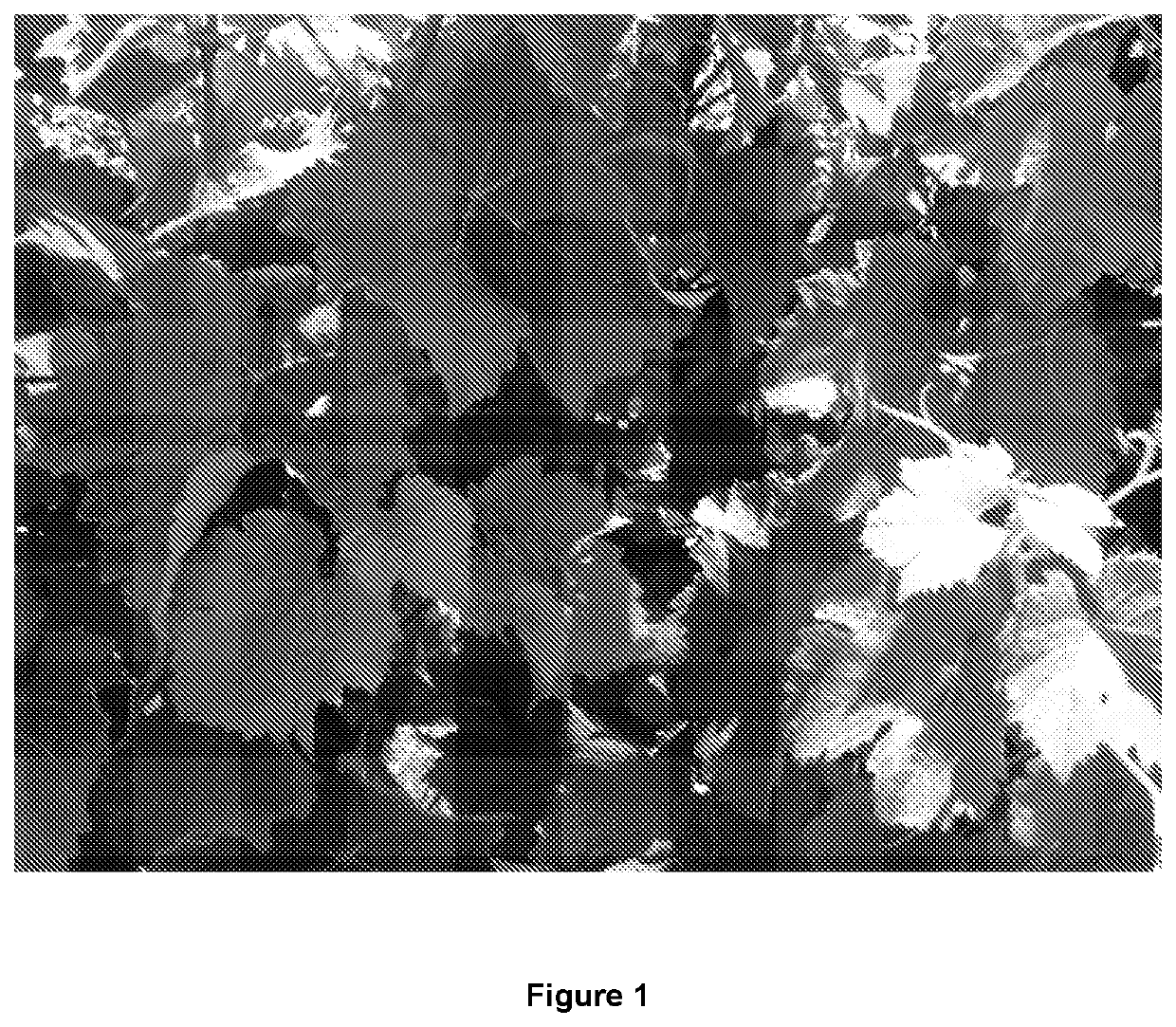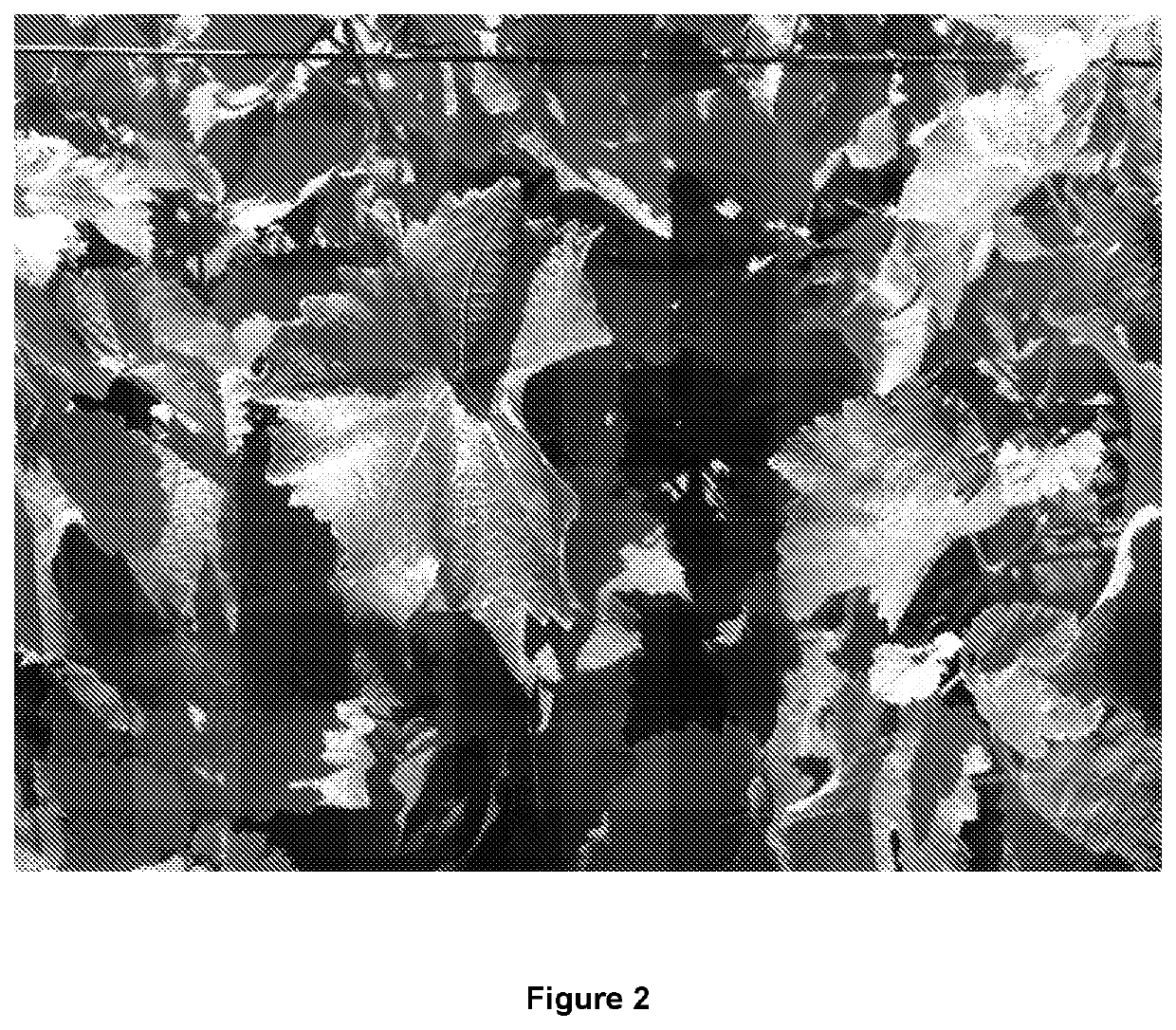A Method for Treatment of Crops
a technology for treating crops and crops, applied in the direction of biocide, animal repellents, disinfectants, etc., can solve the problems of affecting the quality of the treated product,
- Summary
- Abstract
- Description
- Claims
- Application Information
AI Technical Summary
Benefits of technology
Problems solved by technology
Method used
Image
Examples
example 1
ON OF THE DRY FORMULATION
[0113]25 kg of sodium metabisulphite is combined with 67 kg of a sodium benzoate powder and then 1 kg of Diacel 150 (CAS #9000-34-6) is further added. The resulting mixture is then blended by addition to a cement mixer. The resulting mixture is then blended by addition to a cement mixer (100 L capacity revolving drum mixer with a 880 W 1440 RPM electric motor). The mixture is blended for 10 minutes, allowed to stand for 10 minutes and further blended for an additional 10 minutes. The described process provides 93 kg of the dry composition.
example 2
ON OF A FORMULATION COMPRISING A SURFACTANT
[0114]To 93 kg of the dry composition is added 5 kg of polyethylene glycol and the resulting composition is blended by addition to a cement mixer (100 L capacity revolving drum mixer with a 880 W 1440 RPM electric motor). The mixture is blended for 10 minutes, allowed to stand for 10 minutes and further blended for an additional 10 minutes. The described process provides of 98 kg of the desired formulation.
[0115]40 g of the pre-prepared formulation is added to 10 L of water and mixed with agitation and the resulting dispersion is allowed to stand for 10 minutes to ensure the powder formulation is dissolved.
example 3
FOR DILUTED ‘DRY COMPOSITIONS’
[0116]Preparation of Products
[0117]WOB NP 1 and WOB PH1 were prepared according to the general method of Example 1, wherein sodium sulphite is substituted for sodium metabisulphite in the case of WOB PH 1. The method of Example 1 was further modified whereby the sodium benzoate added was in the form of a prill bead rather than a powder.
[0118]The water used throughout the projects is rainwater held in the dark in a plastic tank with stable pH value of 6.25. Controls were set up by replacing actives with tank water only.
[0119]Products were dissolved in tank water before application to the agar plants. Tank water (pH 6.25) was adjusted to the respective pH levels prior to adding the actives to determine the change in pH caused by the actives.
[0120]Tank water was adjusted to pH 4.0, 5.5, and 7.0 before adding sodium benzoate, sodium metabisulphite and WOB NP1, each at 0.8%.
[0121]Tank water was adjusted to pH 7.0, 7.5 and 8.4 before adding sodium benzoate, s...
PUM
 Login to View More
Login to View More Abstract
Description
Claims
Application Information
 Login to View More
Login to View More - R&D
- Intellectual Property
- Life Sciences
- Materials
- Tech Scout
- Unparalleled Data Quality
- Higher Quality Content
- 60% Fewer Hallucinations
Browse by: Latest US Patents, China's latest patents, Technical Efficacy Thesaurus, Application Domain, Technology Topic, Popular Technical Reports.
© 2025 PatSnap. All rights reserved.Legal|Privacy policy|Modern Slavery Act Transparency Statement|Sitemap|About US| Contact US: help@patsnap.com



